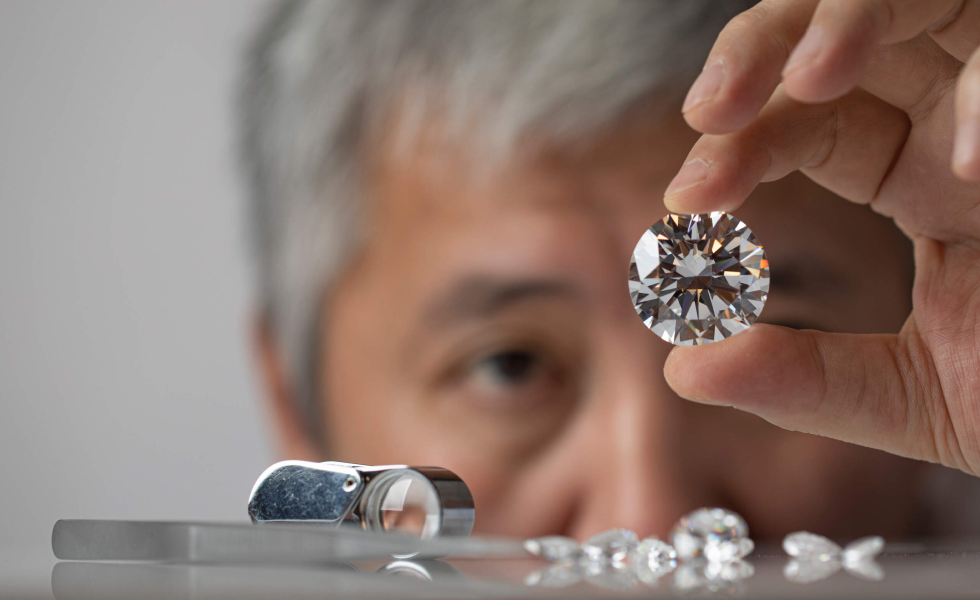Fascination About Lab Grown Diamonds
Table of ContentsLittle Known Facts About Lab Grown Diamonds.Lab Grown Diamonds Can Be Fun For EveryoneAn Unbiased View of Lab Grown DiamondsThe smart Trick of Lab Grown Diamonds That Nobody is Discussing
As you take a trip closer to the Earth's core, stress and temperature rise, which produces the perfect stove for carbon to be exchanged ruby (diamonds are the only gems to be made from purely one element). Via a huge volcanic eruption, these diamonds were transported to the Earth's surface area. It's approximated this procedure was fairly quick (probably over the course of numerous hours), which allowed the rubies to remain intact without melting.The brief response: carats measure the mass of rocks, karats measure the pureness of gold. Carat: 1 carat is equivalent to 0.2 grams, about the weight of a paperclip (following time you see a photo of Mariah Carey's 35 carat engagement ring, simply envision the problem of carrying 35 paper clips around your finger each day).

Below are several of the crucial advantages of lab grown rubies and lab grown diamond jewelry:.
More About Lab Grown Diamonds
Simply put, all-natural or earth-mined rubies are crafted over countless years beneath the Planet's crust from pure carbon combined with pressure and heat. Developing diamonds in a lab needs the same process, simply fine-tuned to occur over a much smaller sized period in a a lot more controlled setting.
Whereas earth-mined rubies are rare and finite and tend to boost in cost over time, lab diamonds are conveniently available., like lab-grown diamond rings, they will not be a great fit for your demands.
They might assume that the disadvantages of lab-grown rubies outweigh the pros. Some may say that, for this reason, acquiring a lab-made ruby also comes with its ethical factors to consider, as doing so takes earnings away from those included in the natural diamond industry that might require it most.
Traditional diamonds rely on the Planet's conditions to establish their high quality or lack thereof. In a laboratory, suppliers can directly control a diamond's high quality.
The Best Guide To Lab Grown Diamonds
You can quickly find tinted, manufactured rubies on the (relatively) inexpensive side along with particular cuts that would be pricier if you were buying a mined diamond only. As discussed, not every insurance coverage policy will secure your lab-grown diamond however that rarely indicates it isn't worth safeguarding. Our comprehensive protection safeguards you under different regrettable conditions, from mystical loss to burglary.
all-natural rubies is that the last is extracted from natural deposits in the Earth while the former is made in a laboratory using controlled setups. Their top quality is mainly the exact same. While the difference in between lab-grown and all-natural diamond alternatives are minimal when it involves quality, a few of the disadvantages of lab-grown diamonds consist of the truth that the rock will certainly decrease in time and, to some, a lack of sentimental worth that's typically linked with extracted diamonds
The procedure entails very little land disturbance and gets rid of problems related to logging and habitat devastation. Lab-grown rubies are typically much more inexpensive than all-natural rubies. This expense distinction can be connected to the streamlined production procedure and the evasion of expenditures related to typical mining. The Controlled Environment in Which Laboratory Grown Diamonds Are Created Enables Constant Quality.
Versatility in Design - Lab Grown Diamonds Deal Developers and Consumers a Versatile Palette to Develop One-of-a-kind and Innovative Jewelry Designs. the Controlled Development Process Enables The Manufacturing of Diamonds in Various Forms and Dimensions. Laboratory Ruby Rings are one of the most Famous Among Laboratory Diamond Jewelry. Laboratory Rubies Usually Feature A More Transparent Supply Chain.
Facts About Lab Grown Diamonds Uncovered
Market Assumption - Despite Their Identical Physical Qualities, Lab Diamonds Might Face Challenges in Market Perception. Some Consumers Still Perceive Natural Diamonds as Having Greater Value and Stature. The Manufacturing of Lab-Grown Diamonds Can Be Energy-Intensive, Specifically in Approaches Like High Pressure Heat (hpht) and Chemical Vapor Deposition (cvd).
All-natural Rubies Are Formed Over Countless Years Deep Within the Planet, Adding To Their Viewed Rarity. Lab-Grown Diamonds, Despite Their The Same Properties, Might Not Carry the Exact Same Rarity Aspect, Affecting Their Perceived Value for Some Consumers. Influence On Diamond-Dependent Economies - the Change In The Direction Of Laboratory Grown Diamonds May here Have Economic Ramifications for Nations and Neighborhoods that Depend on The Ruby Mining Sector.

Laboratory Diamonds Are of Equal Quality to Natural Diamonds in Terms of Firmness, Radiance, and Quality - Lab Grown Diamonds. Yes, Laboratory Diamonds Glimmer Just Like Natural Diamonds. Their Sparkle and Glimmer Are an Outcome of Their Cut and The Method Light Interacts with Their Aspects.